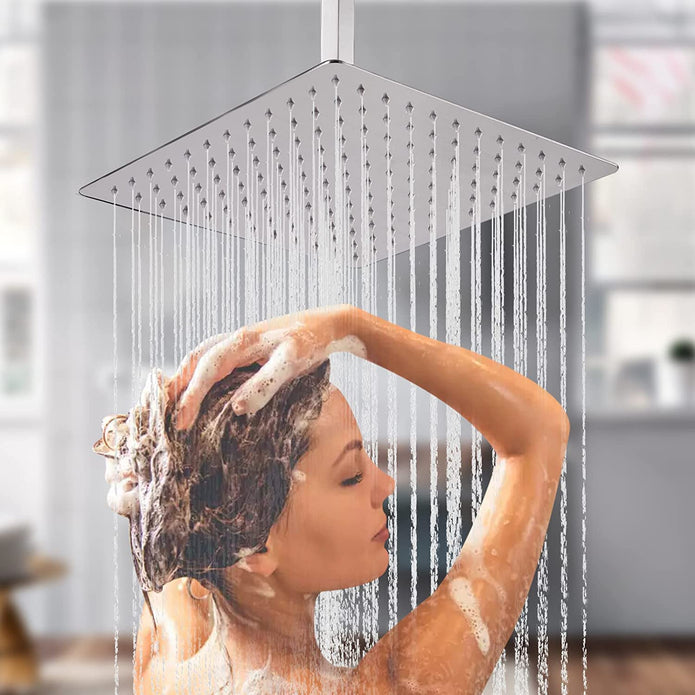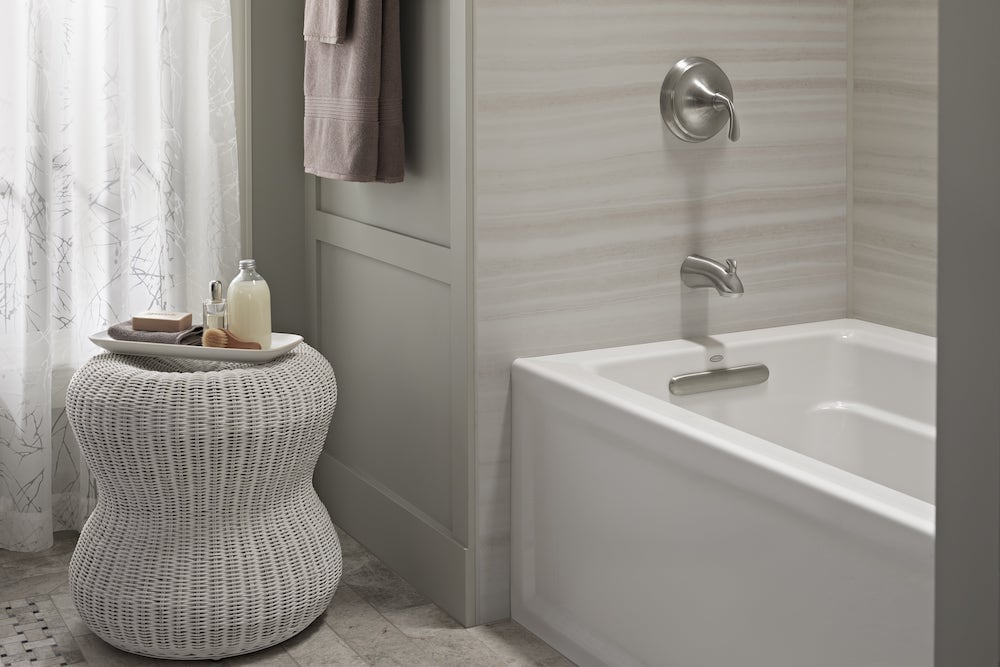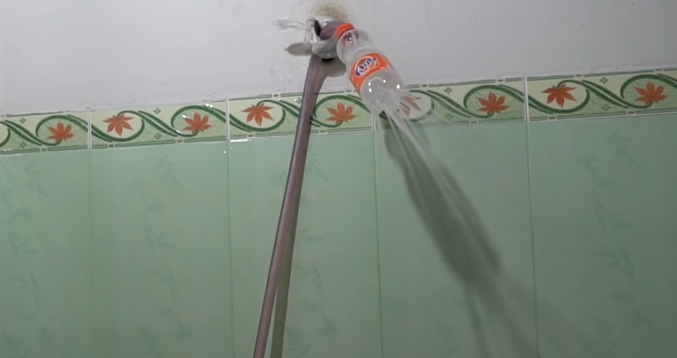
Can you shower without a shower head?
A daily activity for many people, showering is a refreshing and cleansing experience. Taking a shower with the shower head is a shower method that most people will choose. However, can you take a shower without a shower head? In this article, we'll explore the various methods and alternatives you can use to achieve a satisfying shower experience without a traditional a rain shower head and handheld shower head?

Basic principles of showering
To understand how to shower without a shower head, it's important to master the fundamentals of showering. Showering involves spraying water on the body for cleansing, relaxation and hygiene. While a showerhead provides a focused stream of water, the absence of it doesn't negate the possibility of achieving these goals.

Alternative water sources
In the absence of a shower head, alternative water sources can be used to facilitate a shower-like experience. Some possible options include:
Using bucket: The first shower method is to take a bath with a bucket filled with warm water. It is a more traditional shower method. It does not require any shower tool, just use a cup to scoop out the water and pour it on your body to take a bath. The advantage is economical and affordable. The disadvantage is that you can't enjoy the shower pleasure brought by the rain shower system. So far, there are many people who are still bathing in this way in the world.It is an effective way to shower without a showerhead.
Using the bathtub: The second shower method is to take a bath in the bathtub. Taking a bath continuously can relax the body and relieve fatigue. It can also eliminate toxins in the body, which is beneficial to our health. But I have to admit that showering with a shower system is cleaner than showering in a bathtub. When you sit in the bathtub and take a bath, the dirt and sweat will also be submerged in the water, making the water not very clean. If conditions permit, it is best to take a shower before taking a bathtub, which can effectively avoid bringing dirt into the bathtub.
Using basin or sink: If there is a washbasin or sink large enough to be filled with water for bathing. While this method can't replicate the feeling of standing under a stream of water, it can still provide an effective clean.
Using garden hose: In outdoor settings, a garden hose can be used to create a temporary shower experience. By adjusting the water pressure, you can achieve a spray effect that simulates the feeling of a shower.
Using plastic bags: We can try to tie a plastic bag to the hose with a thread and nail some small holes in this bag to avoid direct water entry like a faucet. Water flows out of these tiny holes on the bag, like a spout with tiny holes. The downside of using a plastic bag instead of a shower head is that it has too little pressure for a perfect bath. You can also choose a bag with a zipper as it will keep the line from slipping due to water pressure. If you don't tie the plastic bag properly it can slip off the rod. For this reason, be sure to use strong thread or rubber bands that can withstand the flow of water because of the pressure that will be created when you turn on the faucet.
Improvised shower head:
In situations where a traditional shower head is not available, a temporary replacement can be created that approximates its functionality. Some methods include:
Watering can or jug: By poking or drilling small holes in the bottom of a watering can or jug, a makeshift shower head can be made. This allows water to come out in a manner similar to a traditional shower head.
Plastic bottles with holes: Plastic bottles with small holes pierced in the caps can be used as basic shower heads. The bottle can be filled with water and squeezed to create a controlled flow.
Portable shower: Portable showers are lightweight and portable, making them perfect for outdoor adventures. We also have the option of using a portable shower indoors in case you don't have a shower head.
Personal hygiene precautions
While it's possible to shower without a showerhead using the methods above, there are certain personal hygiene considerations to keep in mind. These include:
Water temperature: Make sure the water used is at a comfortable temperature to prevent burns or discomfort while showering.
Hygiene: Use appropriate soaps, shampoos and other cleansers for cleanliness and personal hygiene.
Conserve water: Be mindful of water use, especially if water may be scarce or limited. Minimize waste and use only the amount of water needed for cleaning.

In conclusion about the topic "can you shower without a shower head?"
It is indeed possible to shower without a shower head thanks to alternative water sources and easy shower heads. While these methods may not provide the exact same experience as a traditional showerhead, they can still promote effective cleaning and hygiene. By using techniques such as the bucket method, sink or tub baths, and simple shower heads, individuals can adapt and maintain personal hygiene even without a traditional shower head.
More topics about shower head
- Which is better round or square rain shower head?
- 1.75 GPM VS 2.5 GPM Shower Head
- High-pressure shower heads vs. low-flow shower heads: Which is better for you?
FAQ About Shower Head:
Q: What is a shower head?
A: A showerhead is a plumbing fixture that mounts to a shower arm or shower holder. It removes water from the water supply in a controlled manner, resulting in a refreshing, efficient shower experience.
Q: How do shower heads work?
A: Showerheads receive water from the water supply through the shower arm or through the plumbing system. Water flows through the internal mechanism of a showerhead and is dispersed through a series of nozzles or openings, creating a spray pattern or stream.
Q: What types of shower heads are available?
A: There are many types of shower heads to choose from, including:
- Fixed Shower Heads: These showerheads are permanently attached to the shower arm or wall and provide a consistent water flow pattern.
- Handheld Shower Heads: These handheld showerheads are detachable from the mounting bracket and can be held in the hand. They often come with shower hoses for added flexibility and convenience.
- Rain Shower Heads: These rain showerheads are designed to mimic the feel of rain by delivering a broad, gentle stream of water from a larger surface area.
- High Pressure Shower Heads: These heads are designed to increase water pressure and provide a powerful, refreshing shower.
- Water Saving Shower Heads: These shower heads are designed to conserve water by incorporating restrictors or aerators, reducing water usage without sacrificing comfort.
Q: What should I consider when buying a shower head?
A: When purchasing a shower head, you may want to consider the following factors:
- Water pressure: Determine whether you prefer a high or low pressure shower experience and choose your shower head accordingly.
- Spray Patterns: Different shower heads offer different spray patterns, such as rain, massage, mist, or a combination. Consider your preferences and choose a shower head with the desired spray pattern.
- Water Saving Features: If water conservation is important to you, look for shower heads designed to conserve water without compromising your showering experience.
- Installation: Consider the convenience of installation. Some shower heads require basic tools and skills, while others may require professional help.
- Durability and Maintenance: Look for shower heads made from durable materials that are easy to clean and resistant to mineral buildup or clogging.
- Style and Aesthetics: Consider the overall design and finish of your shower head to match your bathroom decor.
Q: Can I install a new shower head myself?
A: Yes, many shower heads can be installed by a homeowner without professional help. Most shower heads come with installation instructions outlining the installation process. However, if you are unsure or uncomfortable with the installation process, it is always a good idea to consult a professional plumber.
Q: How to get a shower head off without tools?
A: We can take off shower head without tools, we can try the following methods: First, make sure the water source is turned off. Then, try twisting the shower head slightly counterclockwise by hand. If it doesn't move, wrap a rubber band around the shower head for a better grip, then try turning it again. Alternatively, we can use cloth or rubber gloves to provide more traction while twisting. A little heat with a hair dryer can also help loosen mineral deposits that can cause our shower head to stick. Be careful not to use too much force to avoid damaging the pipe. If those methods don't work, using a strap wrench or pliers and wrapping a cloth around the shower head is a non-tool alternative that provides more leverage.
Q: How often should I replace my shower head?
A: The life of a shower head depends on its quality, usage and maintenance. On average, a shower head lasts several years before needing to be replaced. However, if you notice a significant reduction in water flow, mineral buildup affecting performance, or physical damage, it may be time to consider replacing your shower head.
Q: How do I clean and maintain my shower head?
A: Regular cleaning and maintenance will help extend the life of your showerhead and ensure peak performance.
Q: Are there water saving shower heads?
A: Yes, many manufacturers offer water-efficient shower heads designed to reduce water usage without sacrificing comfort. These showerheads often contain features such as flow restrictors or aerators that limit the amount of water that flows through the showerhead while maintaining a pleasant showering experience.
Q: Can shower heads increase water pressure?
A: Yes, some types of showerheads, such as high-pressure showerheads, are designed to increase water pressure and provide an enhanced showering experience. These showerheads often have features like smaller nozzles or special spray patterns that increase the speed and power of the water stream.
Q: Are there shower heads with filters?
A: Yes, there are shower heads with built-in filters. These filters are designed to remove impurities in water such as chlorine, minerals and sediment. Shower heads with filters can provide benefits such as softer, cleaner water, less dry skin and hair, and an improved overall showering experience.
Q: How many gallons of water per minute in the shower?
A: The gallons per minute of water in the shower may vary depending on the flow rate of the shower head. A standard shower head typically has a flow rate of about 2.5 gallons per minute (GPM). However, some more water-efficient models, such as low-flow or water-saving shower heads, may have flow rates as low as 1.5 GPM or even less. The specifications of a particular showerhead must be checked to determine its exact flow rate and ensure water conservation while maintaining a satisfactory showering experience.
Join Our VIP Gourp

Here we will do:
- Provide good after-sales service;
- Do giveaway activities every once in a while;
- You will have the opportunity to experience new products for free;
- We will select people who share good pictures or videos and give them a gift for free.
- Get the latest news of Bostingner, such as discounts, clearance, new product releases, tips, etc.
- Want to join us? Clik this link: Join Bostingner VIP Group



Leave a comment